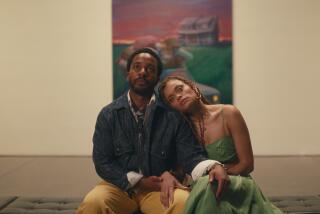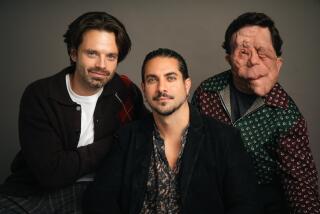A Change of Art : An Actor Who’s a Pushover for a Paintbrush
- Share via
“Painting has always been a part of my life. As a kid in Harlem, I used to draw cartoons on a big tablet and sell them around the neighborhood. My favorite things to illustrate were cowboys and mobsters.
At age 19, I received a scholarship to the National Academy of Fine Arts and Design. But money for canvases and paint was in short supply, so when a friend who was a casting director offered television work, I took it. More and more acting jobs came along, and I started getting locked in. My director at the academy, George Porter, called my mother and said, “I hear Billy’s interested in acting. What is this? He shouldn’t be an actor; he’s a painter. He’s going to be a fine artist some day.”
He was probably right. With the necessary commitment, I would have been a very successful portrait painter. But I was destined for show business. My mother was an aspiring actress and opera singer who studied for many years but never did much with her career. My success as an actor has really been hers; I’m living out what she wanted for herself.
Painting I do for me. Sometimes nobody even sees my work, and my canvases don’t get signed unless my wife or 13-year-old daughter reminds me.
My favorite scenes to create are those with people in them. If art’s just space, just objects, something’s missing. But the process isn’t as therapeutic as most people think. It can be painful. And it’s always difficult to start. To get my energies flowing, I head to an art supply store, usually Carter Sexton, in North Hollywood. There, the atmosphere pulls me right in, just as galleries and museums do. The old wooden counters, the colors of the papers and pencils and pastels and the smell of paint open me up to ideas and make me want to get to work.
People say, “You’re a movie star; you shouldn’t do your own shopping.” But I have to. I do my own laundry, and I go to the supermarket in order to feel the fruits and vegetables and know exactly what I’m getting. An artist can’t afford to be detached from his surroundings.
I shop the same way when buying art supplies. I flip the brushes around with my fingers to see what kind of a point they’ll make and whether the bristles are going to fall out. I test pastels on practice paper when choosing colors. I usually go into Carter Sexton with a list, but once there, I suddenly see lots of other things I have to have. Last fall, I fell in love with a box of $230 French pastels. I’d just bought a set of Rembrandt chalks to replace the ones I’d lost, but the colors of these others were irresistible.
My latest indulgence came a few months ago, with an investment in airbrush materials. I’d just started a large oil painting of my daughter, Hanako, but was already getting bored. The problem wasn’t her. I was just tired of working with oils after all these years. It was time for something new. The airbrush, which I’ve admired for years, has a quality of photographic realism, depth of field and texture that I love. You can get splashes and speckles and details that just aren’t possible with oils, watercolors or pastels.
When I told Neil Green, the owner of Carter Sexton, he laughed and said, “Uh-oh, you’re in trouble now. You’re hooked.” He was right. He knows me and how I go all-out with something new. He understands what it’s like to get high on art.
I figured $500 was the most this latest binge would cost, but the bill came to more than $1,000, the most I’d ever paid for art supplies at one time. The purchases included a brush for fine lines, a larger brush that Neil assured me wasn’t needed, an air compressor and the whole range of 48 colors--even though Neil suggested sticking to a few basics and mixing the rest.
I started to practice with the airbrush the moment I got home. The results have been surprisingly good. Sometimes I’ll work on Hanako’s portrait until daybreak, then step back to survey my work and think, “Yeah, this is it. This is it.” And I’m reminded that when I’m truly impassioned, wonderful things can happen.’
PRODUCED BY LINDEN GROSS
More to Read
The biggest entertainment stories
Get our big stories about Hollywood, film, television, music, arts, culture and more right in your inbox as soon as they publish.
You may occasionally receive promotional content from the Los Angeles Times.










